National Construction Safety Team
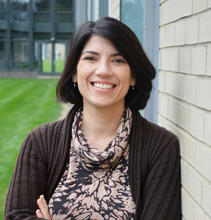
Judith Mitrani-Reiser (Co-Lead)
Judith Mitrani-Reiser leads the NCST investigation into the Champlain Towers South collapse. Mitrani-Reiser is the associate chief of the Materials and Structural Systems Division in the Engineering Laboratory at the National Institute of Standards and Technology (NIST). The division includes four research groups: Community Resilience, Earthquake Engineering, Structures, and Infrastructure Materials. The division also houses three programs established by Congress: the National Construction Safety Team (NCST), the National Earthquake Hazards Reduction Program (NEHRP), and the National Windstorm Impact Reduction Program (NWIRP). Mitrani-Reiser provides leadership in developing and coordinating statutory processes for making buildings safer as authorized by various U.S. laws, including the NCST, NWIR and NEHR acts. She manages and provides oversight on building failure investigations and coordinates work with other federal agencies to reduce losses in the United States from disasters and failures of our built environment.
Mitrani-Reiser earned a B.S. in civil and coastal engineering from the University of Florida, an M.S. in civil and environmental engineering from the University of California, Berkeley, and a Ph.D. in applied mechanics from the California Institute of Technology.
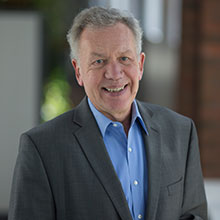
Glenn Bell (Co-Lead)
Glenn Bell is the associate lead of the NCST investigation. Bell has more than 45 years of experience in structural design, rehabilitation and investigation of failures, mostly at the Simpson Gumpertz & Heger (SGH) engineering firm, where he served as CEO from 1995 through 2016. He investigated the 1981 collapse of walkways at the Hyatt Regency Hotel in Kansas City, Missouri, and the 2002 scaffold collapse at the John Hancock Center in Chicago, conducted analyses for NIST of the collapses of World Trade Center Towers 1 and 2, and from 2016 through 2019, evaluated the effects of alkali-silica chemical reactions in the concrete of the Seabrook Station Nuclear Power Plant. His structural design projects include Spaceship Earth at Walt Disney World Epcot Center and the Aga Khan Medical Complex in Karachi, Pakistan. Bell co-founded the American Society of Civil Engineers (ASCE) Technical Council on Forensic Engineering and was the principal driver in establishing Collaborative Reporting for Safer Structures-US (CROSS-US), where he currently serves as director. Bell is the immediate past president of the Structural Engineering Institute of the ASCE.
Bell earned a B.S. in civil engineering from Tufts University and an M.S. in structural engineering and structural mechanics from the University of California, Berkeley. He is a registered professional engineer in eight states, including Florida, and in the District of Columbia. He is a registered structural engineer in Illinois and a chartered engineer in the U.K. He has received numerous recognitions for his contributions, including ASCE’s 2012 Forensic Engineering Award and recent election as a Distinguished Member of ASCE, the society’s highest honor.
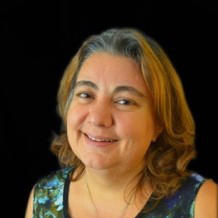
N. Emel Ganapati
Emel Ganapati is co-leader of the evidence preservation project. She is an associate professor of public policy and administration and the director of the Laboratory for Social Science Research, International Hurricane Research Center, at Florida International University (FIU). Her research is dedicated to helping communities become more resilient. She specializes in disaster recovery and mitigation, and sea-level rise.
Ganapati has served as the principal investigator (PI), co-PI or senior expert on several grants funded by the National Science Foundation (NSF), U.S. Department of Justice, University of Colorado Boulder’s Natural Hazards Center (with Centers for Disease Control and Prevention and NSF support), and the Ohio State University’s Drug Enforcement and Policy Center. Ganapati is currently researching multisector stakeholder decision-making processes for resilience and the impact of concurrent disaster events (e.g., COVID-19, hurricanes) on first responders and nonprofits, as well as disaster risk reduction in 17 countries in Latin America and the Caribbean region.
Ganapati is an associate behavioral and social science editor for Natural Hazards Review, a top disaster journal. She is a member of the Culture and Disaster Action Network’s advisory board; the Lincoln Institute of Land Policy/Association of Collegiate Schools of Planning’s (ACSP) Curriculum Innovation Awards Task Force; American Society for Public Administration Executive Committee of the Section on Emergency and Crisis Management; and the Resilient305 Collaborative in South Florida. Ganapati received a Certificate of Recognition for Service Excellence from FIU in 2020 and a community award from the 10th Year Gölcük Earthquake Commemoration Committee for her contributions to the recovery of Gölcük, the epicenter of the deadly 1999 earthquake in Turkey. She is also a recipient of the Florida Education Fund’s 2018 William R. Jones Outstanding Mentor Award. Ganapati holds a master’s degree in planning from the University of Pennsylvania and a Ph.D. in planning from the University of Southern California in Los Angeles.
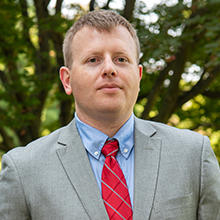
David Goodwin
David G. Goodwin Jr. is co-leader of the evidence preservation project in the investigation. He is a research chemist in the Infrastructure Materials Group of the Materials and Structural Systems Division in the Engineering Laboratory at the National Institute of Standards and Technology (NIST).
In his career as a research chemist, Goodwin investigates the degradation of building materials, consumer plastics and polymer nanocomposites using the state-of-the-art NIST SPHERE device. He is currently the co-leader of the Reliability of Fiber Reinforced Polymer Composites (FRP) Used in Buildings and Infrastructure project, which evaluates the durability and performance of FRP retrofits used for strengthening, repair and seismic retrofit of civil infrastructure. Goodwin also takes part in field deployments to collect, document and assess material performance following disasters. Most recently, he was deployed to Anchorage, Alaska, following the 2018 Cook Inlet earthquake and evaluated the post-seismic condition of FRP retrofits following a decade of outdoor exposure in a subarctic climate.
Goodwin graduated with a B.S. in chemistry from Lafayette College in 2010 and received his Ph.D. in chemistry from the Johns Hopkins University in 2016. Goodwin’s Ph.D. work focused on materials characterization of polymer composites and carbon-containing nanomaterials following environmental transformation processes. In 2018, Goodwin completed his National Research Council Postdoctoral Associateship at NIST.
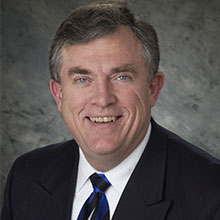
James Harris
Jim Harris is the co-leader for the building and code history project in the investigation. Harris is well-versed in structural engineering practice and research. He received his B.S. in civil engineering from the University of Colorado, Boulder, and his M.S. and Ph.D. in civil engineering from the University of Illinois at Urbana-Champaign. His work experience includes consulting practices in Denver from 1968 to 1973 and from 1981 to the present. He established the J.R. Harris & Company structural engineering firm in 1984. From 1975 to 1981, Harris was a research structural engineer at the National Institute of Standards and Technology (NIST, then the National Bureau of Standards) in Gaithersburg, Maryland.
Harris has designed or evaluated thousands of structures ranging from dwellings to high-rise buildings, industrial facilities, buildings in zones with high seismic activity, excavation bracing, renovations of historic buildings, and many others. His background spans nearly all types of construction and structural materials and includes managing all design disciplines involved in these projects. Harris’ research has focused on the loading and response of structures, particularly earthquake and snow loadings. A second focus is on improving the formulation and use of engineering standards.
He is an active member of several committees that produce national standards for structural engineering practice. He has chaired the committee that produces the standard ASCE/SEI 7, Minimum Design Loads for Buildings and Other Structures. Harris has served on ACI Committee 318, which prepares Building Code Requirements for Structural Concrete, and on the American Institute for Steel Construction (AISC) committees that prepare the Specification for Structural Steel Buildings and the Seismic Provisions for Structural Steel Buildings.
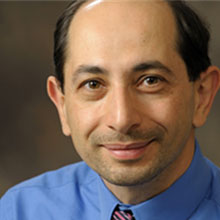
Youssef Hashash
Youssef Hashash serves as co-leader of the investigation’s geotechnical engineering project. Hashash is a professor of civil and environmental engineering at the University of Illinois at Urbana-Champaign with an extensive background in the field of geotechnical, earthquake and tunnel engineering. His expertise includes underground structures, deep excavations, numerical modeling, earthquake engineering and static and dynamic soil-structure interaction analysis, visualization and application of information technology, deep learning and artificial intelligence to geotechnical engineering. He co-led or was a member of post-disaster reconnaissance teams documenting built infrastructure response to earthquakes, floods and explosions.
Prior to joining Illinois, Hashash was a practicing engineer for more than five years and he is a licensed professional engineer in California. He continued his involvement with challenging civil engineering projects as an advisor or peer reviewer. He has also served as a forensic engineering expert on projects such as the Port of Anchorage/Alaska and the Millennium Tower in San Francisco. Hashash holds a B.S., M.S. and Ph.D. in civil engineering from the Massachusetts Institute of Technology.
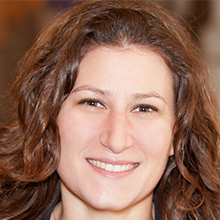
Georgette Hlepas
Georgette Hlepas serves as co-leader of the remote sensing and data visualization project. She is the national geotechnical policy adviser for the U.S. Army Corps of Engineers (USACE) Headquarters office in Washington, D.C. She is also the lead for the USACE Instrumentation and Performance Monitoring Community of Practice and the chairperson for the U.S. Society on Dams Committee on Monitoring of Dams and Their Foundations. She has 14 years of experience in geotechnical engineering and instrumentation with USACE. Her experience includes design, evaluation and oversight of subsurface explorations, instrumentation and foundation remediation projects.
Hlepas has a Ph.D. in civil and materials engineering from the University of Illinois at Chicago and an M.S. in civil engineering from Columbia University, and is a licensed professional engineer in Illinois.
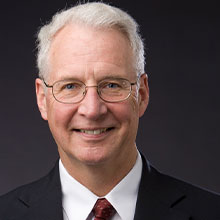
Ken Hover
Ken Hover serves as co-leader for the materials science project in the investigation. A professor of civil and environmental engineering at Cornell University, Ken served as captain in the U.S. Army Combat Engineers, project engineer and project manager for Dugan and Meyers Construction Co., and partner and manager of THP Structural Engineers, designing new structures and investigation and repair of deteriorated buildings and industrial facilities.
He earned his B.S. and M.S. in civil engineering from the University of Cincinnati, and a Ph.D. in structural engineering from Cornell, funded by an Exxon fellowship designed to bring experienced professionals to engineering faculty at U.S. universities. He teaches courses on reinforced and prestressed concrete design and concrete materials. His research focuses on fresh and hardened concrete behavior and its interaction with construction processes and weather, and subsequent degradation due to weather and chlorides. He also mentors on management skills, leadership and professional ethics.
A professional engineer in Ohio and New York, Ken holds top teaching awards at department, college and university levels. He is a distinguished member of the American Society of Civil Engineers (ASCE), an honorary member and past president of the American Concrete Institute (ACI), and holds ACI’s Philleo, Anderson and Structural Research Awards. He is a fellow of the Institute of Concrete Technology in the U.K. and has been named one of the “Ten Most Influential People in the Concrete Construction Industry.” .
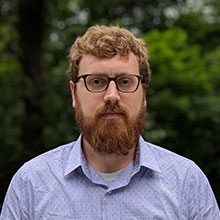
Scott Jones
Scott Z. Jones is the co-leader of the materials science project in the investigation. He is a mechanical engineer in the Inorganic Materials Group of the Materials and Structural Systems Division in the Engineering Laboratory (EL) at the National Institute of Standards and Technology (NIST).
Jones arrived at NIST through the NIST-American Recovery and Reinvestment Act fellowship program in 2011. He was a Pathways student intern at NIST from 2014 to 2016, where his research focused on modeling the transport of chlorine into cracked concrete structures. Jones’ current research focuses on additive manufacturing techniques for concrete construction applications. He is the project leader of the Additive Manufacturing with Cement-based Materials project, chair of ACI 564, 3-D Printing with Cementitious Materials, and director of NIST EL’s Additive Construction Laboratory.
Jones received his B.S. and Ph.D. from the University of Maryland, Baltimore County. His dissertation focused on predicting the service life of reinforced concrete structures repaired with polymeric crack-filling materials.
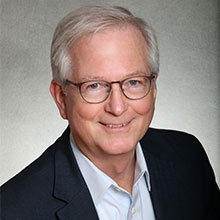
Jack Moehle
Jack Moehle serves as co-leader for the structural engineering project in the investigation. He is a professor at the graduate school in the Department of Civil and Environmental Engineering at the University of California, Berkeley. His academic and professional activities are mainly in structural engineering, with an emphasis on reinforced concrete construction. He is active professionally both as a consulting engineer and as a contributor to development of structural engineering standards and guidelines.
He served as chair of the American Concrete Institute (ACI) Committee 318, Structural Concrete Building Code, for the code cycle leading to publication of ACI 318-19. He has served on the boards of directors of the Structural Engineers Association of Northern California, the Earthquake Engineering Research Institute (EERI), and the ACI. He has received recognition for his professional work, including the Lindau Award, the Siess Award, the Boase Award, the Bloem Award, and the Kelly Award from the ACI; the Huber Research Prize from the American Society of Civil Engineers (ASCE); the Annual Distinguished Lecturer and Outstanding Paper Award from EERI; and honorary member and college of fellows of the Structural Engineers Association of California. He is an elected member of the U.S. National Academy of Engineering and foreign member of the Academy of Engineering, Mexico. He earned a B.S., M.S. and Ph.D. in civil engineering from the University of Illinois at Urbana-Champaign.

Sissy Nikolaou
Sissy Nikolaou is co-leader of the geotechnical engineering project in the investigation. She serves as leader of the Earthquake Engineering Group in the Materials and Structural Systems Division in the Engineering Laboratory at the National Institute of Standards and Technology (NIST).
Nikolaou has more than 25 years of global consulting experience involving critical facilities, infrastructure projects and high-rise buildings. Her consulting work comprised performance and resilience-based design, soil-structure interaction, seismic and geo-hazard analysis, multi-hazard risk assessments, and development of emergency and action preparedness plans. She has served as director of the Earthquake Engineering Research Institute (EERI) and the Applied Technology Council (ATC), and is an advisory member of the National Science Foundation-funded Geotechnical Extreme Events Reconnaissance (GEER) Association. She is currently a governor and treasurer of the Geo-Institute of the American Society of Civil Engineers (ASCE-GI). Her recognitions include receiving the Prakash Prize for Excellence and the WSP Technical Fellow of Earthquake Engineering distinction.
In New York City, Nikolaou has provided technical leadership and management of numerous projects, including the Second Avenue Subway, JFK/LGA airport facilities and AirTrain, One World Trade Center and the Queensboro and RFK bridges. In the Washington, D.C.-Maryland-Virginia metropolitan area, she was involved with the foundation design of the Woodrow Wilson Bridge and the Walter E. Washington Convention Center and led the seismic risk assessment and action plan for the National Institutes of Health headquarters in Bethesda, Maryland. Nationally, she has worked on major dam rehabilitation, water/power plants, critical facilities, high-security data centers and transportation systems. Globally, she has worked for large projects across Latin America, Europe, East Asia and Oceania, including the Torre Mayor tower and the Torre Siqueiros – Polyforum Tower in Mexico City.
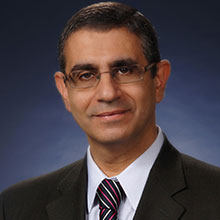
Fahim Sadek
Fahim Sadek is co-leader for the structural engineering project in the investigation. Sadek is a research structural engineer and the former leader of the Structures Group in the Engineering Laboratory at the National Institute of Standards and Technology (NIST). He has extensive experience in finite element modeling and computer simulation of nonlinear, static and dynamic structural response, particularly for structures subjected to seismic, wind, impact, fire and other extreme loads. He also has experience in experimental work, having performed structural testing on structures undergoing progressive collapse. His research specialties include structural dynamics and earthquake engineering, wind engineering and structural reliability, mitigation of progressive structural collapse, fire performance of structures, and degradation and aging of infrastructure. Sadek led the project “Baseline Structural Performance and Aircraft Impact Damage Analysis” as part of the NIST investigation into the collapse of the World Trade Center buildings. Afterward, he led projects on mitigation of progressive collapse of structural systems and fire performance of structures, and more recently, his research shifted to evaluation of degrading structures and infrastructure.
Sadek is a member of the Executive Committee for the Codes and Standards Activities Division of the American Society of Civil Engineers (ASCE) and a member of the American Institute of Steel Construction Specifications Committee. He is the recipient of the Department of Commerce’s Gold Medal Award in 2005, Silver Medal Award in 2007, and Bronze Medal Award in 2017. Sadek is a registered professional engineer in the state of Maryland and a fellow of the Structural Engineering Institute of ASCE. He has a B.S. in civil engineering and an M.S. instructural engineering from Cairo University and a Ph.D. in structural engineering from Southern Methodist University.
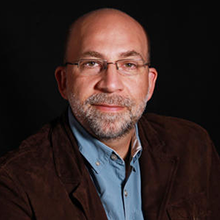
Kamel Saidi
Kamel S. Saidi serves as co-leader for the remote sensing and data visualization project. Saidi is a mechanical engineer in the Intelligent Systems Division at NIST. His current research includes the development of metrics, test methods and ground-truth systems for evaluating the performance of robot perception, safety, dexterity, mapping and autonomy for manufacturing as well as emergency response. He is also involved in research aimed at developing performance evaluation methods, metrics and facilities for 3D imaging systems (through ASTM E57). Saidi conducted research in construction automation for 10 years before shifting his focus to manufacturing and emergency response robotics.
Saidi holds a Ph.D. in civil engineering from the University of Texas at Austin (UT), where he focused his research on information technology at the construction site and construction automation systems. His graduate research included the design and implementation of a teleoperated hydraulic robot for the maintenance of electric power plant boilers (for which he is a co-inventor on a U.S. patent). Saidi's graduate research also involved the design and implementation of a road-crack-sealing robot and a large-scale manipulator (robot arm) for construction operations. Saidi also holds an M.S. and a B.S. in mechanical engineering with an emphasis on mechanical systems and design (and a minor emphasis on biomedical engineering) from UT.
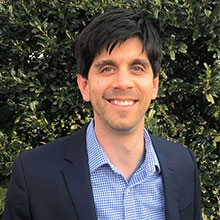
Chris Segura
Christopher Segura serves as co-leader for the evidence preservation project in the investigation. Segura is a member of the Earthquake Engineering Group of the Materials and Structural Systems Division in the Engineering Laboratory at the National Institute of Standards and Technology (NIST.) Segura conducts research aimed at reducing risks to the built environment caused by earthquakes and other extreme loads. His research interests include earthquake engineering, performance-based seismic design of buildings and bridges, nonlinear modeling of reinforced concrete structures, large-scale structural testing, uncertainty quantification, and advancement of low-damage earthquake-resistant structural systems. Segura’s current work includes a project developing experimental and analytical data to better understand the seismic behavior of reinforced concrete walls and coupling beams constructed with high-strength steel reinforcement; and another project evaluating the impact of material, modeling and earthquake demand (record-to-record) uncertainty on seismic performance evaluations of reinforced concrete buildings and bridges. He is also a co-principal investigator for NIST’s Performance-based Engineering Research for Multi-hazards (PERFORM) Structural Testbed, a large-scale reconfigurable structural testing facility.
While at NIST, Segura has participated in disaster and failure studies as a member of NIST teams deployed to Anchorage, Alaska, following the 2018 Cook Inlet earthquake, and to Panama City, Florida, following Hurricane Michael, also in 2018. Segura is a member of the American Society of Civil Engineers (ASCE), the American Concrete Institute (ACI), the Earthquake Engineering Research Institute (EERI), and the Society of Hispanic Professional Engineers (SHPE). He serves on ACI Committee 133, Disaster Reconnaissance; ACI 369, Seismic Repair and Rehabilitation; and ACI 374, Performance-Based Seismic Design of Concrete Buildings. He has a B.S. and M.S. in civil engineering from University of Colorado Boulder and a Ph.D. in civil engineering from University of California, Los Angeles.
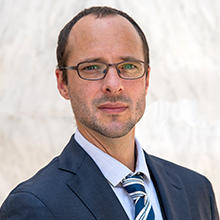
Jonathan Weigand
Jonathan M. Weigand serves as co-leader for the building and code history project of the NCST investigation. Weigand is a research structural engineer in the Structures Group of the Materials and Structural Systems Division in the Engineering Laboratory (EL) at the National Institute of Standards and Technology (NIST).
Jonathan's research interests relate to the design and behaviors of structures subjected to extreme loads, such as fire, earthquakes, column loss and multi-hazards. Within this context, his current research focuses on large-scale testing, advancing modeling capabilities to predict structural performance, and developing innovative strategies to enhance structural robustness. Jonathan leads two research projects at NIST: one developing enhanced steel and precast concrete connections for mitigation of disproportionate collapse, and the other developing metrology for evaluating the efficacy of fiber-reinforced polymer strengthening of aging reinforced concrete infrastructure. He also manages EL’s Performance-based Engineering Research for Multi-hazards (PERFORM) Laboratory — a state-of-the-art modular structural testing laboratory — and an affiliated project dedicated to the facility’s safety, operations and advancement.
Jonathan serves as secretary of the American Society of Civil Engineers (ASCE) Disproportionate Collapse Technical Committee, vice-chair of the Structural Stability Research Council (SSRC) Task Group 06 – Stability under Extreme Loads, and associate editor of ASCE’s Journal of Architectural Engineering.
Prior to joining NIST in 2014, he received his Ph.D. in civil engineering from the University of Washington. His Ph.D. research focused on evaluating the potential for disproportionate collapse in steel gravity framing systems and included full-scale testing of steel gravity connections and development of high-fidelity finite element and reduced-order component-based modeling approaches to analyze connection and system behaviors under column loss.
Supporting Team Members
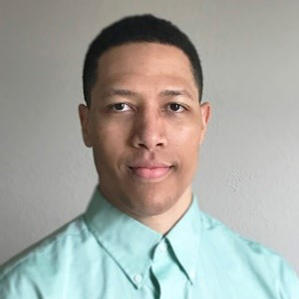
Malcolm Ammons
Malcolm Ammons supports the building code and history, evidence preservation, materials science, and structural engineering projects. He is a research structural engineer in the Structures Group of the Materials and Structural Systems Division in NIST’s Engineering Laboratory. His research interests are broadly related to the behavior and design of structural systems for damage mitigation from extreme loading events. His current work at NIST involves elevated temperature testing of structural welds in support of performance-based fire design, and large-scale testing of precast concrete connections for mitigation of disproportionate collapse.
Ammons has a B.S. in civil engineering from the University of Florida, and M.S. and Ph.D. degrees in structural engineering from the University of Michigan. His graduate research involved enhancing hollow structural section and braced frame performance through nontraditional civil engineering materials.
Regina Avila
Regina Avila is a digital services librarian and data librarian supporting the evidence preservation project. She joined NIST in 2009 to implement the NIST Digital Archives, leading a team in the digitization and preservation of the agency’s publications. Since then, her duties have included leading a library team to investigate research data management services. As a data librarian, she successfully collaborated with NIST’s IT department and laboratories in curating and publishing research data — which required the development of tools to create data management plans, a NIST enterprise data inventory, and data documentation. She is currently working with researchers to curate data for Disaster and Failure Studies within the Engineering Laboratory. Avila has an M.L.I.S from the University of Denver.
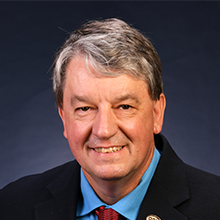
Dale P. Bentz
Dale P. Bentz supports the materials science project. He is a chemical engineer who retired from NIST’s Materials and Structural Systems Division in 2018 after more than 33 years of service. He is a former member of the International Union of Laboratories and Experts in Construction Materials, Systems and Structures (RILEM), the American Concrete Institute (ACI) (Fellow), ASTM (honorary member of C01), and the American Ceramic Society (ACerS). While at NIST, his research interests included experimental and computer modeling studies of cement-based and fire-resistive materials, with special emphasis on characterization and durability. He has co-authored more than 350 technical publications, with a Google Scholar h-index of 91 as of September 2021.
Bentz received a B.S. in chemical engineering from the University of Maryland, an M.S. in computer and information science from Hood College, and an M.A. in teaching from Mount Saint Mary’s University.
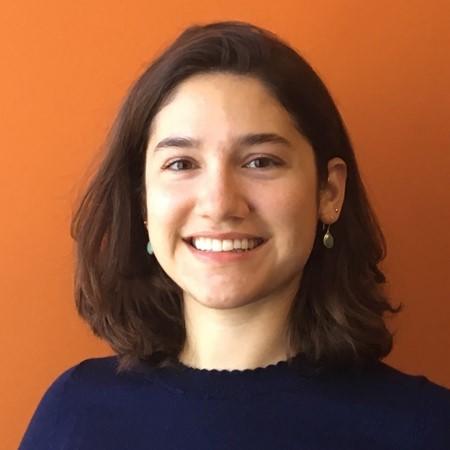
Christine Beyzaei
Christine “Zee” Beyzaei supports the geotechnical engineering project and is an engineer in NIST’s Earthquake Engineering Group. Before joining NIST, she gained experience as a practicing engineer in the San Francisco Bay Area, working on projects related to geotechnical engineering, earthquake engineering, critical infrastructure, lifeline systems and failure investigations. She also performed field investigations and advanced laboratory testing in Christchurch, New Zealand, following the 2010-2011 Canterbury earthquake sequence. Beyzaei is a steering committee member of the American Society of Civil Engineers’ (ASCE) Innovative Technologies and Tools in Geotechnical Engineering Committee. She serves as an advisory panel member of the Geotechnical Extreme Events Reconnaissance (GEER) Association and has served on GEER reconnaissance teams following the 2018 Anchorage, Alaska, earthquake and the 2014 South Napa, California, earthquake. She also supported post-event research investigations following the 2011 Mineral, Virginia, earthquake. She serves as co-chair of the EERI Safety, Advocacy, and Messaging Subcommittee of the School Earthquake Safety Initiative and received EERI’s 2021 Younger Member Award.
She earned a B.S. in civil engineering from George Washington University and an M.S. and Ph.D. in civil engineering from the University of California Berkeley.
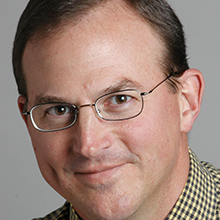
Jonathan Bray
Jonathan Bray is supporting the geotechnical engineering project. He is the Faculty Chair in Earthquake Engineering Excellence at the University of California, Berkeley. He was elected to the U.S. National Academy of Engineering in 2015. His expertise includes post-extreme-event reconnaissance, material characterization, numerical modeling of geosystems, liquefaction and its effects on structures, seismic performance of earth structures, earthquake surface faulting and ground motions, and seismic site response.
Bray has been a registered professional civil engineer since 1985 in Virginia and 1990 in California. He has consulted on the California High-Speed Train Project Technical Advisory Panel, Transbay Tower Structural Design Review Team, and the BART Earthquake Safety Program Peer Review Panel and served as an adviser to the New Zealand Earthquake Commission. Bray is the creator and former chair of the National Science Foundation-sponsored Geotechnical Extreme Events Reconnaissance (GEER) Association. Additionally, he served as the vice president of the Earthquake Engineering Research Institute and as a member of the Advisory Committee on Earthquake Hazards Reduction. He has authored more than 400 research publications.
He has received several honors, including the American Society for Civil Engineers (ASCE) Terzaghi Award, International Society for Soil Mechanics and Geotechnical Engineering Ishihara Lecture, ASCE Peck Award, Seismological Society of America Earthquake Engineering Research Institute Joyner Lecture, ASCE Middlebrooks Award, ASCE Huber Research Prize, Packard Foundation Fellowship, and NSF Presidential Young Investigator Award. Bray earned engineering degrees from West Point (B.S.), Stanford University (M.S., structural engineering), and UC Berkeley (Ph.D., geotechnical engineering).
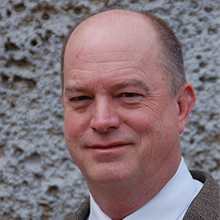
Dan Brown
Dan Brown supports the geotechnical engineering project. He is recognized as a leading authority on the construction and design of deep foundations. He spent 22 years on the faculty at Auburn University, where he taught and conducted research on deep foundations. Brown remains active in deep foundation practice through his consulting firm, Dan Brown and Associates. His consulting work includes the foundation design of numerous large bridge projects as well as commercial structures. He remains active in teaching through short courses, including the National Highway Institute course on drilled shafts, and in organizing the International Association of Foundation Drilling (ADSC) Professor Training Workshops in Chattanooga, Tennessee. Brown has authored numerous technical papers and was lead author of the 2018 Federal Highway Administration manual on design and construction of drilled shafts.
He has been recognized with the Golden Beaver Award from the Beavers (a heavy engineering construction association), the American Society for Civil Engineers (ASCE) Huber Prize for research, the ASCE Martin Kapp Foundation Engineering Award, the Deep Foundations Institute Distinguished Service Award and the ADSC Outstanding Service Award. Brown is current past president of the Deep Foundations Institute, a member of the Moles (a national organization of construction experts), an honorary member of the Beavers, past chair of the Geo-Institute Deep Foundations Committee, and an honorary technical affiliate of both the ADSC: The International Association of Foundation Drilling and the Pile Driving Contractors Association.
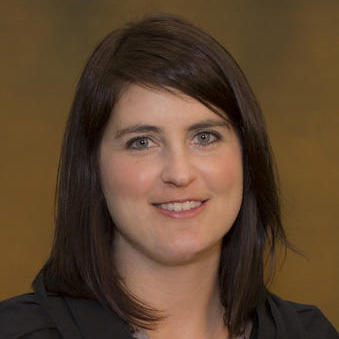
Tanya Brown-Giammanco
Tanya Brown-Giammanco is NIST’s Disaster and Failure Studies director, leading a multidisciplinary staff responsible for conducting fact-finding field investigations and studies focused on: building and infrastructure failures; successful building and infrastructure performance; evacuation and emergency response systems; and disaster recovery and community resilience. These field investigations and studies can be carried out under four different statutory authorities at NIST: National Construction Safety Team (NCST) Act, National Earthquake Hazards Reduction (NEHR) Act, National Windstorm Impact Reduction (NWIR) Act, and the NIST Organic Act.
Brown-Giammanco’s research has focused on natural hazards and their effects on buildings and roofing, the development of laboratory testing methodologies, and the development of tools, metrics, and statistical relationships to quantify and explain damage states, to advocate for better building practices and materials. She serves as a steering committee member in the development of a new ASCE standard on the estimation of wind speeds in tornadoes and chairs the EF-Scale subcommittee. Brown-Giammanco is also a member of the Standards Technical Panel for the Impact Resistance of Prepared Roof Covering Materials (UL 2218) standard.
She earned a bachelor’s degree in atmospheric science and a master’s degree in water resources science from the University of Kansas, and a Ph.D. in wind science and engineering from Texas Tech University. She is a faculty associate at Texas Tech University.
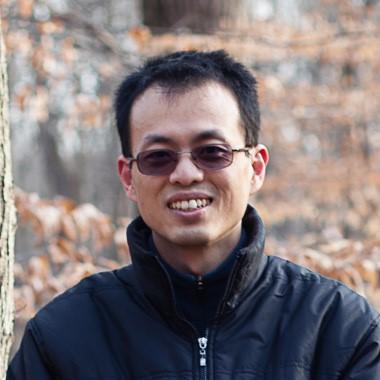
Tzong Hao Chen
Tzong Hao Chen supports the evidence preservation project by leading development of an evidentiary database, which facilitates building debris data preservation. He is a software engineer in NIST’s Engineering Lab with extensive hands-on experience in developing scientific research data applications. His solutions have helped stakeholders realize and present their visions and ideas as readable, modular and validated implementations of full-stack web and desktop applications. Chen earned an M.S. in computer science from George Washington University and a B.S. in physics from the National Cheng Kung University, Taiwan.
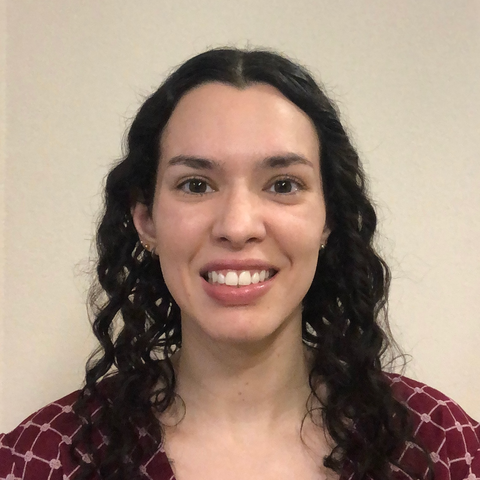
Ruthmara Corzo
Ruthmara “Ruthie” Corzo supports the materials science project. She is a Miami, Florida, native. Her current research efforts at NIST involve the development of new glass standard reference materials for the forensic and geological community and the improvement of evidence interpretation for the analysis of glass using X-ray fluorescence spectrometry. Corzo received her B.S., M.S., and Ph.D. in chemistry from Florida International University. She joined the Materials Measurement Science Division at NIST soon after completing her Ph.D. in 2018. She is a member of the Organization of Scientific Area Committees (OSAC) Trace Materials Subcommittee, which focuses on the advancement of forensic trace evidence documentary standards.
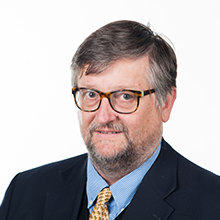
David Frost
David Frost supports the geotechnical engineering project. He is the Elizabeth and Bill Higginbotham Professor at the School of Civil and Environmental Engineering at Georgia Tech. He has worked in industry in Ireland and Canada on infrastructure projects, and has focused his career on the study of natural and human-caused disasters and their impact on infrastructure. His research involves the development of digital data collection systems for studying infrastructure problems.
Frost has graduated 42 Ph.D. students, published more than 180 refereed journal and conference papers and given more than 80 invited lectures worldwide. For 30 years, he has served on or led National Science Foundation-supported post-disaster study teams following disasters in the U.S., Turkey, India, China, Chile and Japan as well as at the World Trade Center complex following the 9/11 attacks. He is a founding member and chair of the Geotechnical Extreme Events Reconnaissance (GEER) Association, an NSF-sponsored organization that responds to disasters worldwide. He is the subsurface engineering research thrust leader for the NSF Engineering Research Center on Bio-mediated and Bio-inspired Geotechnics. Frost has organized numerous workshops and conferences on the applications of spatial analysis tools to study damage patterns from disasters.
He has been recognized for his teaching and research, including receiving the ASCE Technical Council on Forensic Engineering Outstanding Paper Award, an NSF National Young Investigator Award, the American Society of Civil Engineers (ASCE) Huber Civil Engineering Research Prize, and the ASTM International Hogentogler Award. He is a registered professional engineer in the U.S. and Canada and a Fellow of ASCE.
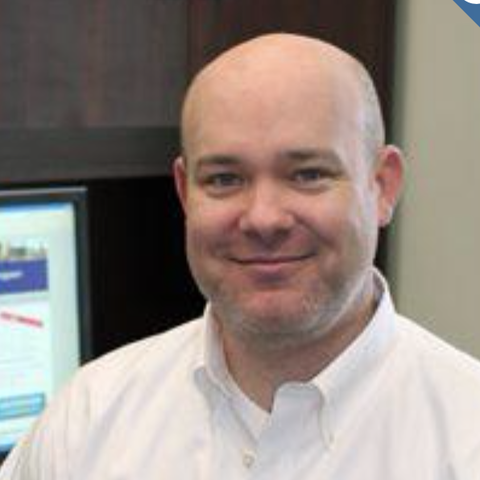
John Harris
John Harris supports the structural engineering project and is a research structural engineer at NIST, and the current acting director of the National Earthquake Hazards Reduction Program (NEHRP). His research interests include earthquake engineering, performance-based seismic engineering, seismic design of structural systems, alternative seismic engineering philosophies, structural steel buildings, base isolation and development of building code seismic provisions. Prior to joining NIST, Harris was a practicing structural engineer for more than 10 years, specializing in analysis and design of tall buildings for wind and earthquake effects. He is a licensed structural and professional engineer in several states. He has a B.S. in civil engineering and an M.S. in structural engineering from North Carolina State University and a Ph.D. in structural engineering from the University of California in San Diego.
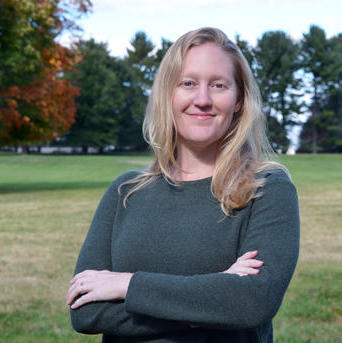
Katherine Johnson
Katherine “Jo” Johnson supports the geotechnical engineering project. She is a social scientist within NIST’s Earthquake Engineering Group (EEG) and has worked on a variety of projects related to climate change, natural hazard risk reduction and recovery, and improvements to the built environment. Johnson is currently leader of the emergency communications project for the Hurricane Maria NCST investigation and a co-lead on EEG’s functional recovery project. She received a Ph.D. in environmental anthropology from the University of Maryland.

Vincent Lee
Vincent Lee supports the remote sensing and data visualization project. He works in the Dimensional Metrology Group within the NIST’s Sensor Science Division. His research topics include laser trackers, terrestrial laser scanners, X-ray computed tomography metrology, calibration artifact designs, coordinate measuring machines and systems, and the Newtonian constant of gravitation. He also oversees NIST’s measuring tape calibration service. Lee joined NIST in 2011, immediately after earning his Ph.D. in mechanical engineering from Clemson University.
Quonte Little
Quonte Little supports the evidence preservation project. He serves as a welder technician in NIST’s Fabrication Technology Division, where he works alongside other machinists making critical components for NIST and its customers. Before joining NIST in February 2021, Little spent nine years working for the U.S. Department of the Navy. He has a strong background and numerous certifications in quality assurance and occupational health and safety. Quonte is currently working on a degree in computer aided drafting.
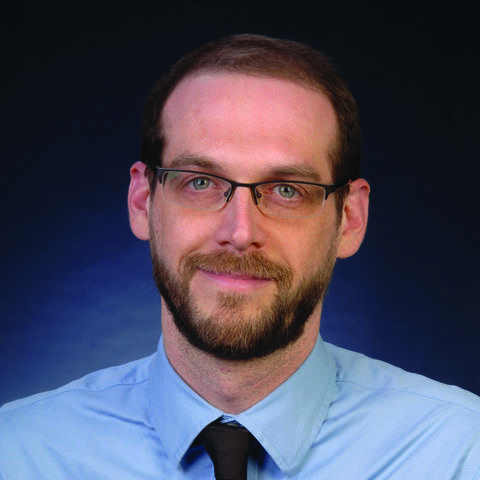
Keith Martin
Keith Martin is a librarian in the NIST Research Library supporting the building and code history project. He provides research support to NIST laboratory and programmatic staff, including literature reviews, market research, publications impact assessments and customized reference and research services. He also works with the NIST archives and museum, helping to maintain and tell the stories from more than one hundred years of NIST history. Martin has an M.S. in library and information science from Simmons University and joined NIST in 2001.
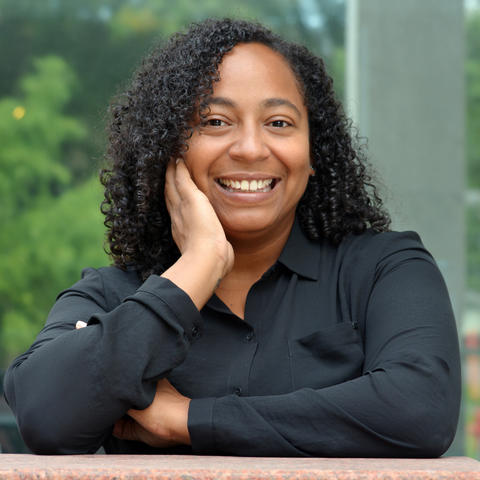
Carmen Martinez
Carmen Martinez is an experienced information technology specialist at NIST, where she specializes in product management and government policy and serves as a cloud solution specialist for the Engineering Laboratory. She is the primary liaison between the laboratory’s researchers and the developers who create the tools they need. Martinez was recognized by the NIST Disaster and Failure Studies (DFS) program for leading the creation of the DFS Data Portal, which provides a platform for the general public and other stakeholders to submit any data related to a disaster, including photos and videos. Before working for NIST, she served in the United States Air Force as a logistical manager for engineers and transporters. She holds a product management certification from eCornell and is working toward a degree in cybersecurity management and policy.
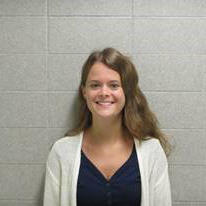
Marisa McCormick
Marisa McCormick supports the evidence preservation and material science projects. She is a research chemist in the Infrastructure Materials group of the Materials and Structural System Division in NIST’s Engineering Laboratory. Her current work involves investigating the degradation of building materials, consumer plastics, and polymer nanocomposites during long-term ultraviolet weathering. McCormick has a B.S. in chemistry from St. Mary’s College of Maryland and an M.S. in forensic chemistry from the George Washington University. She joined NIST as a Pathways Intern during her graduate studies.
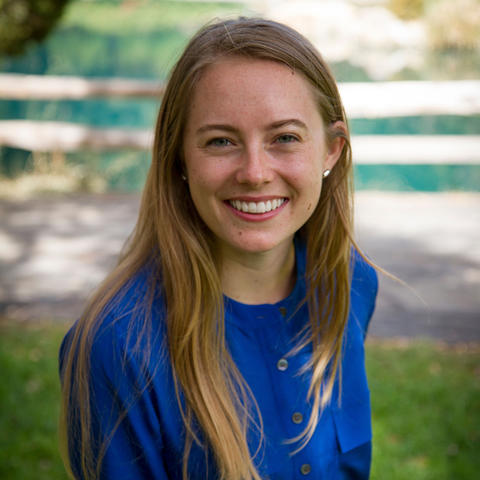
Stephanie L. Moffitt
Stephanie L. Moffitt supports the materials science project. She is a materials research engineer in NIST’s Infrastructure Materials Group where her primary research focuses on improving the durability of solar panels. She first joined NIST as an NRC postdoc working to understand the movement of sodium, which contributes to the degradation of panels in large solar arrays. Moffitt is an active member of NIST’s Measurement Science for Service Life Prediction of Polymers Used in Photovoltaic Systems project, where her expertise in X-ray characterization provides insight into the failure of polymeric materials in solar panels. She obtained her Ph.D. in materials science from Northwestern University.
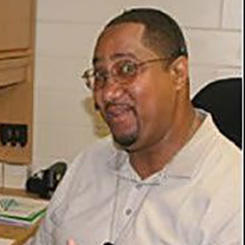
Cartier P. Murrill
Cartier P. Murrill is an IT specialist for NIST’s Engineering Laboratory who performs software and server administration, mobile device support, and training and support for various cloud tools within the lab. He provides IT support remotely and in the field for deployments of the Disaster Resilience Group and the Fire Research Division. Murrill began his federal career in the United States Army as a computer programmer, software evaluator and network administrator until he retired in 1998. He was a contractor for 15 years at NIST, holding several technical and leadership positions before joining the civilian federal workforce in 2012. Murrill obtained his bachelor’s degree in information technology from American Intercontinental University.
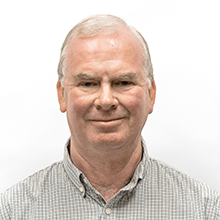
Larry Olson
Larry D. Olson supports the geotechnical engineering project. He is president and principal engineer of Olson Engineering Inc., which he co-founded in 1985. He has a broad range of expertise in the areas of geotechnical and materials engineering. He has been actively involved in the management and performance of nondestructive testing and evaluation projects for structural condition assessment; repairs consultation; geotechnical, materials, geophysical and vibration engineering; structural health monitoring; forensic engineering; and applied research and development projects.
Olson has conducted investigations to determine the conditions of such facilities as bridges, slabs and pavements, nuclear reactors, buildings, deep foundations, dams and tunnels. He has also performed nondestructive testing of wood and steel pile foundations, masonry structures and steel columns for integrity evaluations. These investigations were performed with seismic, sonic, ultrasonic, electrical, magnetic, ground penetrating radar, infrared thermography, vibration and other nondestructive and destructive methods to evaluate internal conditions from quality assurance and forensic troubleshooting perspectives. He is a professional engineer and has an M.S. in geotechnical engineering from the University of Texas at Austin.
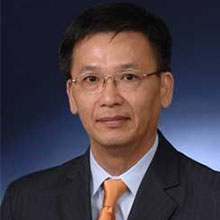
Long Phan
Long Phan serves in a supporting role on the building and code history projects in the investigation. Phan is the leader of the Structures Group in the Materials and Structural Systems Division in the Engineering Laboratory at the National Institute of Standards and Technology (NIST). He has conducted research on a wide range of topics, including performance of structures and materials subject to extreme loading (fire, earthquake, hurricane wind and storm surge, tornado wind and debris, and ice-floe impact) and field investigations of damage to the built environment caused by natural or human-made disasters.
He was an appointed member of the selected American Society of Civil Engineers (ASCE) and the U.S. Army Corps of Engineers team investigating the 9/11 terrorist attack on the Pentagon and was a co-author of the ASCE Pentagon Building Performance Report. He is the recipient of several NIST and external awards, including the American Concrete Institute (ACI) Arthur J. Boase Award in 2019; the U.S. Department of Commerce Gold Medal in 2014; the U.S. Department of Commerce Silver Medal in 2007; the U.S. Department of Commerce Bronze Medals in 2006 and 1990; the ACI Wason Medal in 2004; and the U.S. Army Corps of Engineers’ Award for Valuable Contribution to the Pentagon Rebuilt Retrofit Program in 2002. Phan is a fellow of the ACI and a registered professional engineer in Virginia. He is also an adjunct professor at the civil engineering department of Catholic University of America. He received a B.S. in civil engineering from Phu-Tho Polytechnic University of Saigon, and an M.S. and Ph.D. in civil engineering from Washington University.
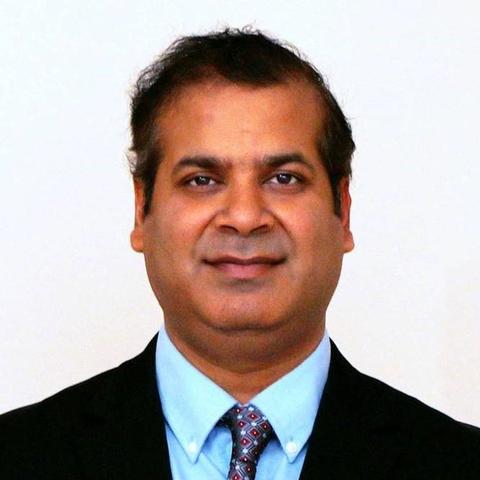
Prem Rachakonda
Prem Rachakonda is supporting the remote sensing and data visualization project and is a mechanical engineer in the Sensing and Perception Systems Group in the Intelligent Systems Division of NIST’s Engineering Laboratory. He works in the field of advanced manufacturing systems, high precision instrumentation, 3D vision and robotic applications, with expertise in nanotechnology, 3D scanning, lidar, laser scanning and vision systems. His work primarily addresses technical and standardization activities for industrial metrology, industrial automation, autonomous vehicle research, product development and strategies for improving the impact of government funded research. He earned a bachelor’s degree in mechanical engineering from India’s JNT University and a master of science in manufacturing systems engineering from the University of Kentucky.
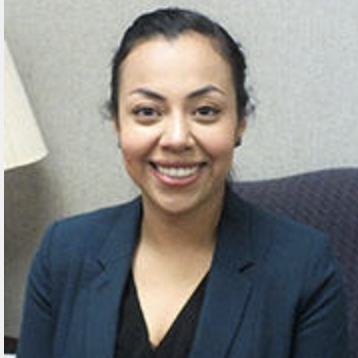
Cynthia Rivas
Cynthia Rivas is supporting the evidence preservation project and is a geographer in NIST’s Engineering Laboratory. Her research interests include the roles of volunteered geographic information and geographic information systems in disaster science and emergency management and the use of remotely sensed data to identify high-risk communities. She is also a member of the NIST Hurricane Maria Program, providing geographic information systems (GIS) expertise to the NCST investigation into the effects of the hurricane on Puerto Rico.
She earned a B.S. in conservation and resource studies and society and environment, as well as a master’s degree in landscape architecture and environmental planning from the University of California Berkeley. She earned a GIS certificate from the Disaster Research Center at the University of Delaware, where she is a Ph.D. candidate in the Joseph R. Biden, Jr. School of Public Policy and Administration.
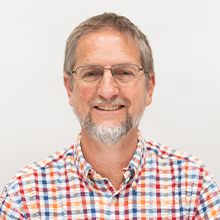
Dennis Sack
Dennis Sack supports the geotechnical engineering project. He is senior vice president and principal engineer at Olson Engineering. He is the manager of nondestructive testing (NDT) services at Olson and has a broad range of experience in nondestructive testing and evaluation of thousands of structural elements of various materials and with a wide range of acoustic and other NDT methods. Sack was the subject matter expert on the R06A/G products for Strategic Highway Research Program 2, NDT of Bridges and Tunnels. He is also an instructor for an ASCE course on structural condition assessment. He is responsible for the design and development of NDT acoustic-based instrumentation, both hardware and software. He earned a B.S. in electrical engineering at California State University, Northridge.
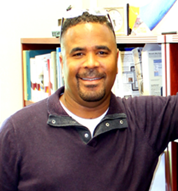
Daniel Sawyer
Daniel Sawyer supports the remote sensing and data visualization project and is the leader of NIST’s Dimensional Metrology Group. He has worked for more than 20 years in performance evaluation and standardization of large-scale dimensional inspection equipment that provides length traceability for components manufactured in high-value industries such as aerospace, shipbuilding, power generation and land excavation. His group has expertise in dimensional measurement uncertainty for coordinate measuring technologies such as laser tracker, terrestrial laser scanners and coordinate measuring machines. He has a B.S in business administration from Towson State University; a B.S. in mechanical engineering from the University of Maryland College Park, where he is a member of Tau Beta Pi’s national honor society; and a master of mechanical engineering degree from the Johns Hopkins University.
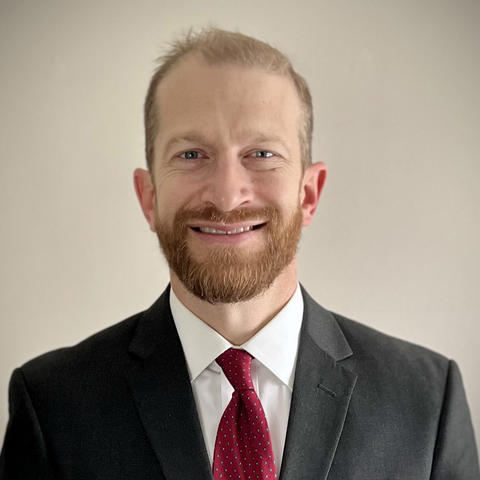
Matthew Speicher
Matthew Speicher supports the structural engineering project. He is a research structural engineer in the Earthquake Engineering Group at NIST. His research interests include performance-based seismic design and assessment, design of steel structures, recentering systems, rocking structures, passive damping, and advancement and application of new materials. He focuses on applied research that helps advance earthquake resilience and has active projects investigating the collapse performance of code-compliant steel buildings, comparing traditional design standards to performance-based seismic design standards, exploring alternative assessment criteria to account for loading histories, coming up with ways to easily account for the beneficial effects of overstrength in the assessment of cold-formed steel framed structures, and investigating the effects of stability provisions in seismic design.
Speicher is actively involved in codes and standards development, including being a voting member on AISI Committee of Framing Standards Lateral Design Subcommittee, an associate member of the ASCE 41 committee, and liaison to the Building Seismic Safety Council’s Provisions Update Committee. He is a member of the American Society of Civil Engineers, Earthquake Engineering Research Institute, and the American Institute of Steel Construction. He also participated in earthquake reconnaissance missions to Christchurch, New Zealand (2011, ASCE 41 team), and Anchorage, Alaska (2019, NIST team).
Prior to joining NIST in 2010, Speicher received his Ph.D. from the Georgia Institute of Technology. His doctoral thesis involved the development, testing and assessment of seismic resisting systems using nickel-titanium shape memory alloys.
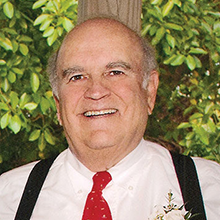
George Tamaro
George Tamaro supports the geotechnical engineering project. He is a consulting engineer with expertise in foundation design and construction and a member of the National Academy of Engineering. He has served as vice president and chief engineer of ICOS Corporation of America, a foundation engineer with the Port Authority of New York and New Jersey, and a partner at MRCE. Tamaro was involved with the building of the first World Trade Center in New York and the rebuilding of WTC 7 and Freedom Tower. He has been involved in the design and construction of notable foundations and superstructures including the Messeturm in Frankfurt, Germany; the Friedrichstadt Passagen in Berlin; the JFK light rail project in Queens, N.Y.; the New York City subway; the Goldman Sachs Tower in New Jersey; and the Times Square Tower in New York City, and several forensic investigations including the New Orleans levee collapses and the Henry Hudson Parkway retaining wall collapse.
Tamaro is the recipient of numerous awards, including the Deep Foundations Institute Legends Award, DFI Distinguished Service Award, ASCE Martin S. Kapp Foundation Engineering Award, ASCE Homer Gage Balcom Award for Excellence in Structural Engineering, Moles Award for Outstanding Achievement, ASCE Edmund Friedman Professional Recognition Award, Ralph B. Peck Medal from the ASCE GeoInstitute, ASCE OPAL Lifetime Award for Design, ASCE and AAES Fritz Medal, National Society of Professional Engineers Award, ASCE Ernest E. Howard Award, and U.S. Department of the Army Outstanding Civilian Service Medal. He has a B.S. in civil engineering from Manhattan College, an M.S. in civil engineering from Lehigh University, an M.S. in architectural technology from Columbia University, and an honorary doctorate of engineering from Manhattan College (2011).

Ann Virts
Ann Virts supports the remote sensing and data visualization project. She leads NIST’s Mobility Performance of Robotic Systems project, in the Engineering Laboratory. In that role, she develops test methods, artifacts and datasets that measure the performance and safety characteristics of mobile and wearable robots within manufacturing/industrial environments.
Virts is also the associate project leader for the Emergency Response Robots project in NIST’s Fire Risk Reduction in Communities program. She develops and implements robot test methods, interfaces with emergency responders and robot technology developers, and meets complex technical and logistical demands of demanding response robot field exercises. She has also led data collection efforts and participated in field exercises for several Defense Advanced Research Projects Agency (DARPA) and Army Research Laboratory projects.
She earned a B.S. in information systems management, with a minor in emergency operations and planning from the University of Maryland University College.
Contacts
-
(301) 975-6343

